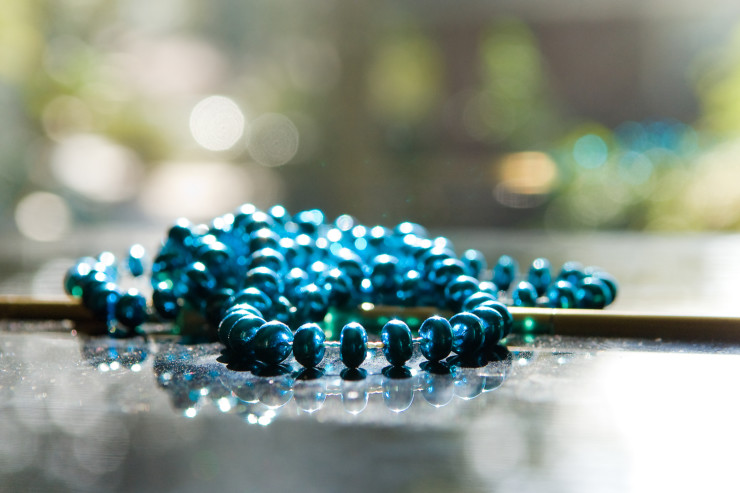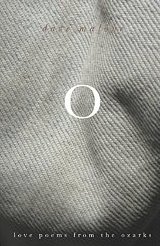Teen Magazine. That glossy mag from the late ’80s and early ’90s. With covers and spreads of girl crush stars like Scott Baio and Leif Garrett.
But there was also, blue of the heaps of beads.
The Diane Wakoski poem “Blue Monday” once perched near the back of the magazine, perhaps between a shampoo ad and the latest poofy hairstyle.
In high school, my sister and I, only eighteen months apart in age, were good friends. I can’t recall if my literature-inclined sister (teen mags notwithstanding) told me to read the poem, or if I thumbed the glossy pages of the edition seeking pics of bikini-clad girls, or if the roots of my lifelong passion to understand the intelligence, feelings, and power of women took over—but nonetheless. Blue of the heaps of beads grew in my head.
This was not an ordinary love poem.
There was a man in a blue suit. There was a fedora. Blood pooled on the street.
My sophomore year of college, I decided not to date. Instead, I wanted to understand women. I figured a purity and openness might occur without the dating and sexual element (as much as is possible with nineteen-year-olds). And I learned how to listen, and though the mysterious wants and desires of women still seemed distant, I felt I now knew something of compassion and of the heart.
By my junior year, my poetry-reading list grew to include powerful, memorable influences such as Fred Chappell’s prose poem “Midquest,” which featured the ebullience of his lover bathing. The amazing, Midwestern, earthy, dark, mysterious poems of Jack Driscoll. I gulped Anne Sexton’s love poems and Marge Piercy’s and Sylvia Plath’s, and of course, Diane Wakoski’s.
I knew it necessary for a good writer to have life experiences, so at the age of twenty-two, I cashed my grandmother’s college graduation gift check and drove my ugly but reliable Toyota Tercel across the south and east from Biloxi to Manhattan. At twenty-three, I moved in with two girls in Albuquerque. At twenty-six, armed with a graduate degree in English, I unsuccessfully tried to pull a Raymond Carver and worked as a janitor. At twenty-seven, I became a newspaper editor. I have worked in medical billing, at a semi-trailer factory, at a city parks and rec, and in academia. During those renegade times, I loved a couple of women, and I believe they loved me.
Blue of the heaps of beads.
When I was thirty, I prepared a full-length collection of my love poems which embody a passionate, romantic take on life set against both city and the Ozarks. I was brave enough to mail Diane Wakoski my manuscript with a request for a back-cover blurb. On a summer day in 1998, she responded by letter, writing magic about my volume: “Could it be that sex and love actually belong together? How nice to still embrace that rather literary idea.” And I wept in the post office.
Since that time, I’ve published four more books of poetry. The landscape is similar. It is Ozark. It is woman in all her magnificence. It is passion and pain.
Blue of the heaps of beads.
I always come back to the love poem, and I always come back to the Ozarks.
Through interesting twists of fate that included a town barber, a drifter, and a snowstorm, I found Jenni here in southern Missouri. In ninth century Japan, it was customary for lovers via courier to exchange poems celebrating their romance. Many of the poems in this volume were ones I originally sent to Jenni. Often, I was the courier, delivering them in the shadowy, Ozark night. Other times, my biking messenger, James, (who looked a lot like this poet) brought them to her workplace. Sometimes, a poem rested on our bedside table, ready for us to read together at night.
Given the rich natural world where she and I live, given our roots, it was of course natural that southern Missouri, our hills and hollers, the lake, and our little burg between a pair of Ozark knobs would provide the backdrop for my love poems to her, for this work.
I wanted to capture passion but not shy away from the flawed nature of love. To love the shy backs of someone’s knees, his or her unfairness—these encompass what we don’t always discuss about our lovers. But I want to say what cannot be said. These revelations are my blue of the heaps of beads.
Dave Malone
Somewhere in the Ozarks
January 2015
Photo by Kelle Sauer, all rights reserved. Used with permission. This article is a reprint from O: Love Poems from the Ozarks by Dave Malone.
- From the Poet: Blue of the Heaps of Beads - November 29, 2018
- “Tiny Machine,” by Dave Malone - October 30, 2015
- The Sacred Tree - August 28, 2012


L.L. Barkat says
There is something wonderful about someone “writing magic” about our words, yes? It’s almost like being invited to dance. 🙂
I love how you came to the love poem, and how it keeps you coming back.
Dave Malone says
Indeed. What an amazing gift from a poet I respected and revered so much. Who must have been so busy with her own writing and with teaching. A gift, a dance.
Thanks, Laura. Yep. My newest work goes lots of places, is very broad in scope–but that doesn’t mean I don’t come back to that love poem! 🙂
Katie says
shimmer
glimmer and shine
reflection on the glass
cerulean, lapis blue pearl
sparkle
Dave Malone says
Lovely. 🙂